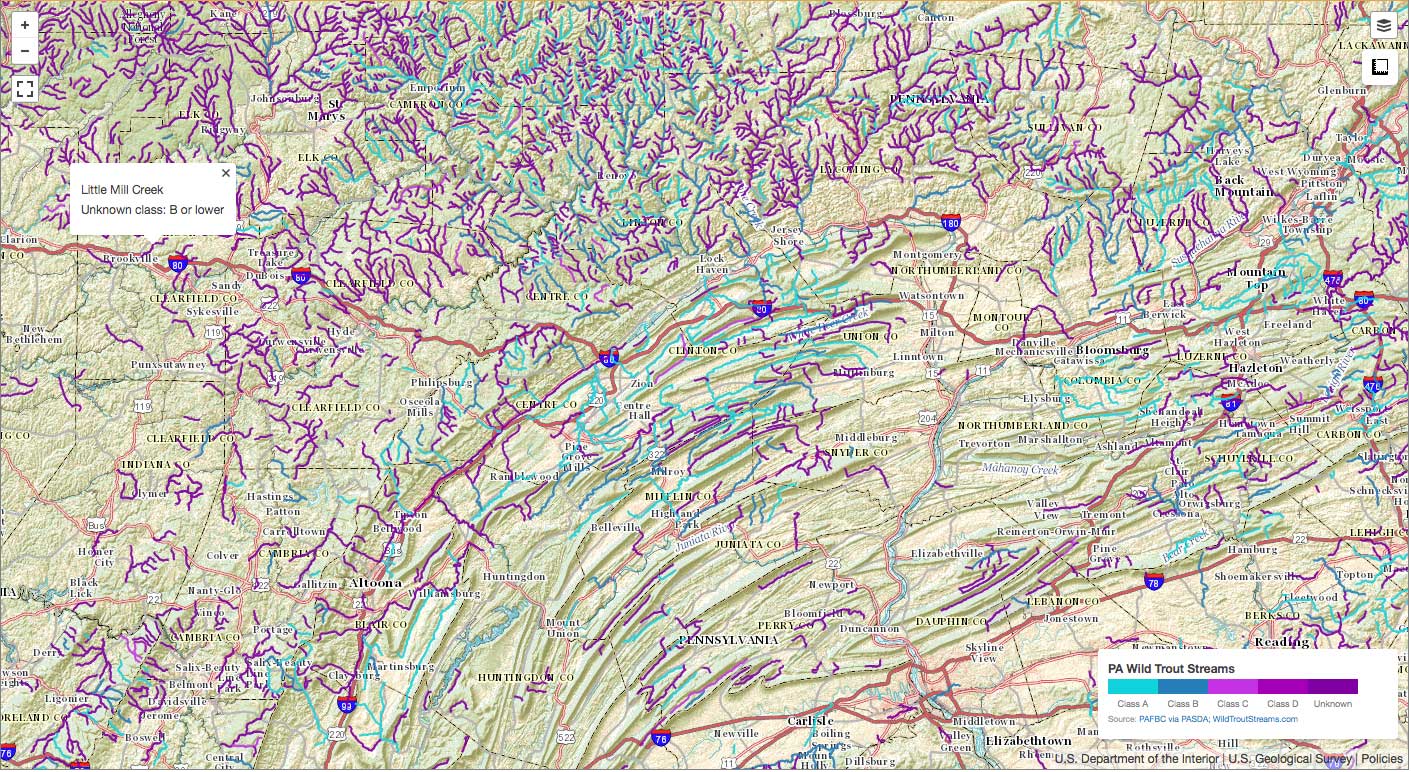wtsobsessed
Member
- Joined
- Mar 11, 2011
- Messages
- 40
The next generation of WildTrouStreams.com no longer requires you to download any files. If you have a fast internet connection, an HTML 5 compatible browser (IE 9+, or recent versions of Firefox, Chrome, or Safari) and (ideally) a big screen, you can view a detailed map of PA that contains information about all of the streams holding wild trout, plus a lot of additional information.
You can find it here: PA Wild Trout Streams
This is still a pilot implementation. Right now, for example, there's no good way to print a map... I'm hoping to provide some additional features like that, and the ability to export markers.
Please let me know what you think.

You can find it here: PA Wild Trout Streams
This is still a pilot implementation. Right now, for example, there's no good way to print a map... I'm hoping to provide some additional features like that, and the ability to export markers.
Please let me know what you think.




